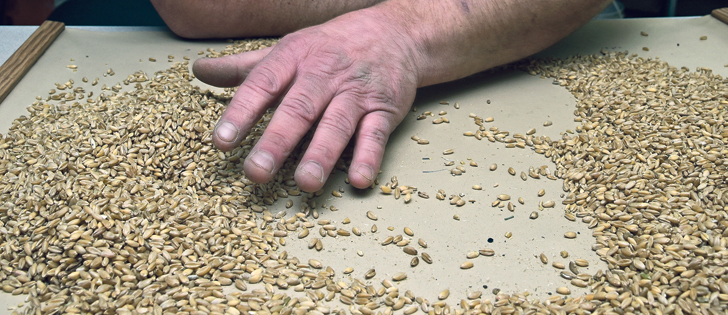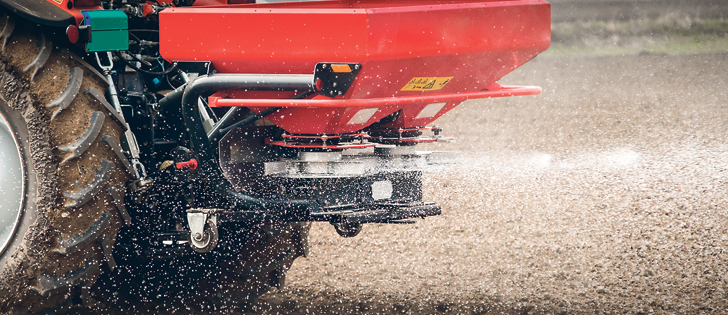Crop market analyst Mike Jubinville could have taken a different spin on the famous opening line of Charles Dickens’ A Tale of Two Cities.
That’s because Jubinville, head of ProFarmer Canada, thinks crop markets in 2017 will be characterized as neither the best of times nor the worst of times.
He could have also noted that Dickens’ book was about the French Revolution and today we have another upending of the normal order with the election of Donald Trump as U.S. president, who promised to renegotiate trade pacts and spend billions on infrastructure.
Read Also

Pakistan reopens its doors to Canadian canola
Pakistan reopens its doors to Canadian canola after a three-year hiatus.
Jubinville thinks crop market trends in 2017 will likely continue 2016’s range-bound trade with prices toward the bottom when the trade focuses on large global production but rallying to the upper end of the range when focus turns to robust trade.
“We are not in a bull market nor a bear market in the big picture. We are in a sideways market,” Jubinville told a crowd at CropSphere last week.
“We have to recognize sideways trends and incrementally market some when we get into the upper end of the trading range.”
However, the market this year faces uncertainty outside of the usual supply and demand considerations.
Trump is the biggest wild card.
For example, Jubinville said Trump vowed to name China a currency manipulator in his first 100 days in office. During the campaign he said his administration would bring cases against the Asian country for what he said was unfair trade behaviour.
A trade war with China would be troubling for American agriculture and for crop and livestock markets globally.
The United States has already launched a complaint with the World Trade Organization alleging that China subsidizes its wheat production.
China has ruled that American exports of dried distillers grain, a byproduct of ethanol production, are subsidized and last week increased import duties on the product.
“Already the saber rattling is happening,” Jubinville said.
It is impossible to predict what Trump will do, but the stakes are high. China buys almost 60 percent of U.S. soybean exports.
China could start to manipulate its soybean imports to remind the U.S. of its importance.
“They can’t stop taking U.S. soybeans because they need them, but they will probably start to diversify their supply as best they can,” Jubinville said.
If so, China could try to buy more South American soybeans, and there might also be potential for increased imports of Canadian soybeans and canola.
Trump policies could also affect the value of the American dollar.
The value of the greenback against a basket of other world currencies is near record high.
The relative strength of the American economy has its central bank raising interest rates, which has encouraged an inflow of capital into the U.S. dollar, lifting its value.
A strong American dollar normally discourages exports of American agricultural products and other commodities because it makes them more expensive for those with weak currencies.
As well, if weak U.S. crop exports lead to rising year end stocks, then crop prices on the big U.S. futures exchanges fall.
The impact for Canadian farmers could be moderated if the loonie is weak. However, Trump has also promised $1 trillion in infrastructure investment with incentives for massive private investment in areas such as bridges, roads and airports. The lower taxes he promises could also spur business expansion.
This would likely fuel inflation and spur demand for commodities generally, which could lift crop prices and the Canadian dollar at the same time, he said.
“The best canola prices we had, $12, $13, $14 a bushel, came when we are at par or better to the U.S. dollar,” he said.
“Conversely, some of the worst prices I remember, $6 a bushel back in 1999-2000, was when we had a 65 cent dollar.”
Oilseeds
Oilseed prices in 2016 were supported by a disappointing soybean harvest in Brazil and palm oil production problems in Indonesia and Malaysia because of El Nino dryness.
Rain has returned to palm producing regions, and production is expected to bounce back. Brazil is forecasting a record crop, but Argentina has a problem with excess rain.
The U.S. produced a record soybean crop, and its year end stocks were forecast to grow considerably. However, export demand is topping expectations, and the U.S. Department of Agriculture has started to wind back its ending stocks forecast.
Statistics Canada says Canada produced 18.4 million tonnes of canola this year, the second largest crop ever. The trade thinks it is closer to 19 million tonnes, but that matters little because demand is record strong and the ending stocks should still be manageable.
“I’m not bearish canola,” Jubinville said.
He thinks the next month or so could see some weakness, but prices should then turn higher at winter’s end.
“We’ll likely see it in basis im-provement at first, and then a grinding improvement in the futures in the April, May, start of June period.”
He said he would start to sell new crop if a combination of November futures and basis created a net fall delivery price of about $485 a tonne or $11 a bu.















